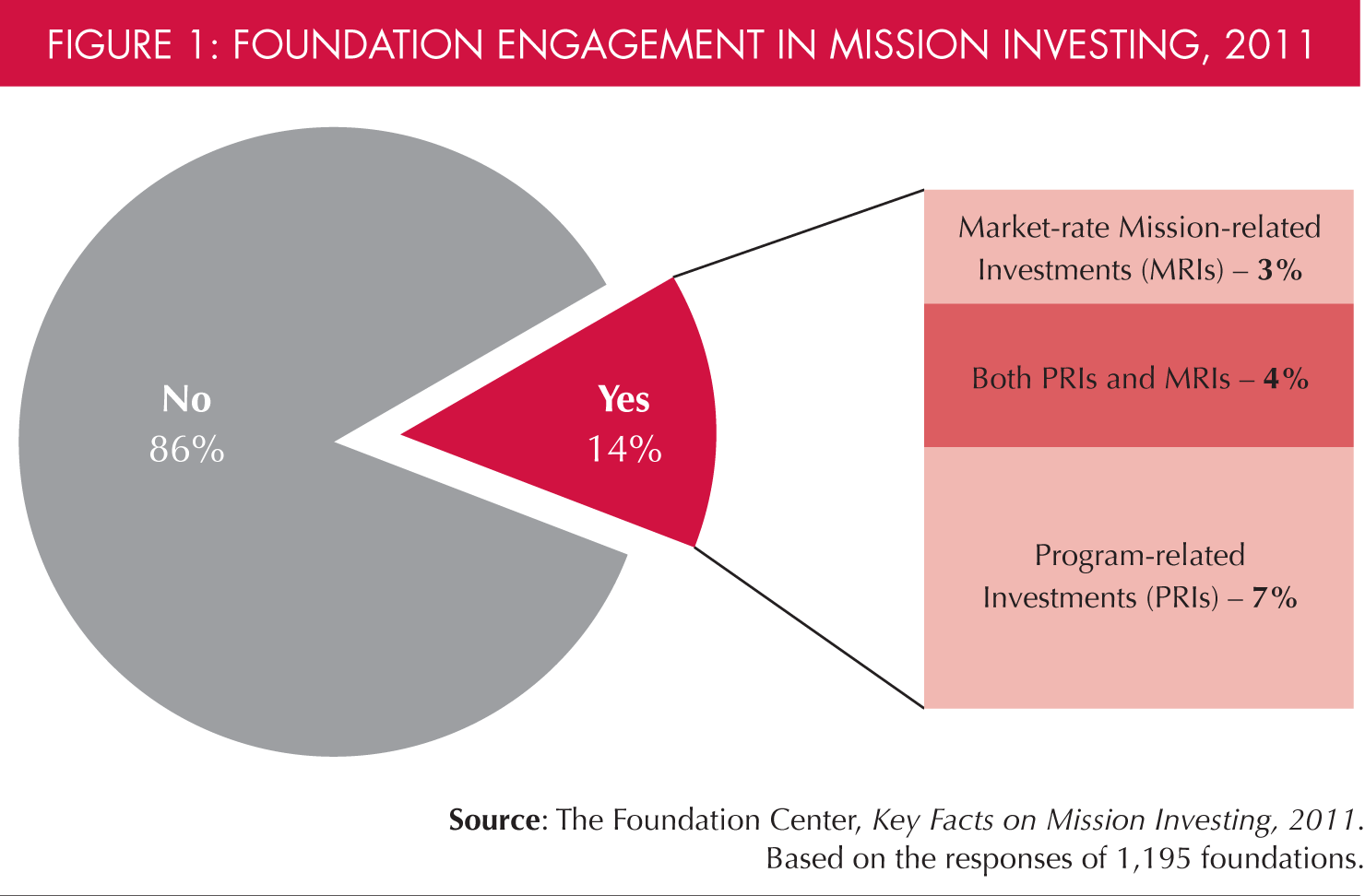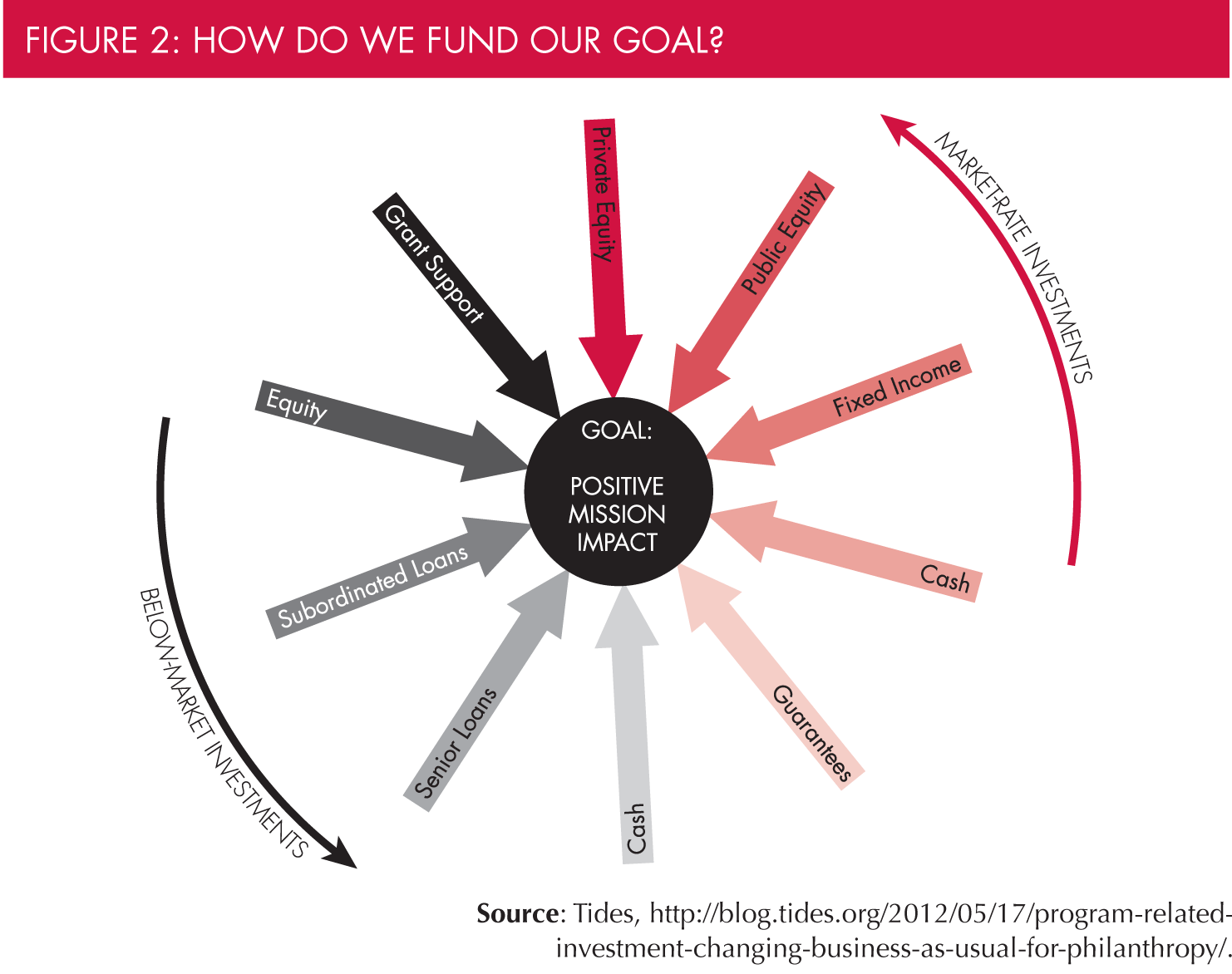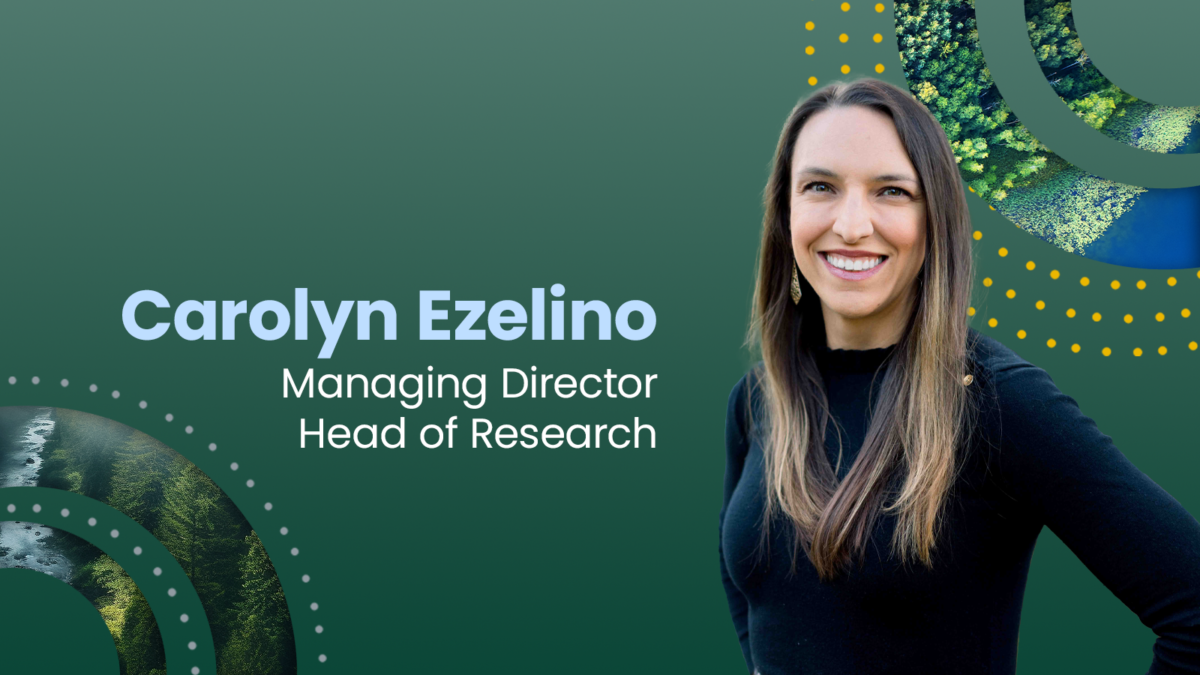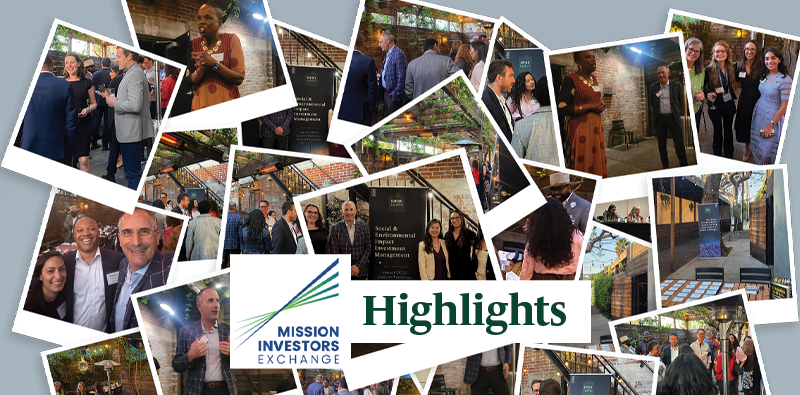National Committee for Responsive Philanthropy, By Peter Berliner and David Wood
Winter 2013-14
Progressive philanthropy has (at least) two mantras: do more with limited resources and tackle systems while working on problems. Both of these core motivators for mission investors can help clarify how to move the field forward.
While still a relatively small but growing practice, foundations of all types and sizes are using mission investments – designed to generate both a financial and a social or environmental return – to expand their impact and to direct greater amounts of capital toward community needs.
Through this strategy, foundations are not only tapping into the greater part of their assets – their endowments – they also are influencing how financial markets respond to critical domestic or global challenges.
Neither is easy work and both require foundations to think and work in new ways. It may mean reviewing the foundation’s purpose, values and strategies; reexamining investment goals; and challenging widely accepted beliefs about the market. For many foundations, it also means establishing new partnerships to find or create investment opportunities and encouraging others to join in.

‘Doing more’ in practice
Here are a few ways in which active mission investors are pushing existing boundaries:
“Going 100%”:
If a majority of foundations were to begin mobilizing their endowments or investment portfolios through mission investment, billions of dollars could be channeled toward addressing community needs. Consider that while foundations together disperse an estimated $50 billion each year in grants, their collective endowments exceed $600 billion. Currently, only about one in seven foundations is actively engaged in mission investing and, of those, only half are using their endowed funds to do so. The potential for much greater activation of foundations assets is great.
Some foundations are leading the way by seeking to deploy 100 percent of their endowment assets in support of their missions. Not satisfied to limit mission investments to a small slice of their endowment or program assets, these investors have found like-minded investment advisors and fund managers to help them find suitable investments across asset classes. Once seen as an unrealistic target, 100 percent is becoming a way to distinguish a foundation’s full commitment to mission investing in practice.
One such foundation is KL Felicitas, a small to medium family foundation, which over the past seven years has converted more than 85 percent of its assets to mission-aligned investments, while generating competitive, market-rate returns. Its story challenges the prevailing assumption that doing good means sacrificing returns.
Another family foundation, the Erich and Hannah Sachs Foundation, is deploying its endowment through program-related investments (PRIs), which provide below-market capital to community development and other similar organizations. Not encumbered by a requirement that it live in perpetuity, the foundation has been able to elevate its impact by recycling repayments of principal into new investments. As a result, it will have deployed far more dollars through the life of the foundation than it would have by making grants alone.
The likelihood that more foundations will be able to increase their mission investments is on the rise with the emergence of new investment opportunities and more mission investing success stories. One valuable resource is the framework developed by the Tellus Institute called Total Portfolio Activation that describes ways in which mission investors can find investment opportunities within every asset class in their portfolios.
Building new products:
A second approach for foundations is not simply to search for suitable mission investment opportunities, but also to help create them. In Detroit, for instance, the Kresge Foundation has partnered with NCB Capital Impact to create the Woodward Corridor Investment Fund, focused on dense, mixed-use, mixed-income investment meant to revitalize a core Detroit neighborhood. The fund is designed to offer more patient and lower transaction cost capital to deals that conventional finance has not served.
The Housing Partnership Equity Trust (HPET), a new real estate investment trust managed by the Housing Partnership Network, received important support and investments from the MacArthur and Ford Foundations as well as Prudential, Citibank and Morgan Stanley. HPET is meant to offer a quicker route to bidding and closing on deals, and create a lower transaction cost structure that will make it easier to attract new investors into the affordable housing space. In each of these cases, foundation mission investors took leadership roles in creating products that better met the needs of end users of capital and the communities meant to benefit from transactions.
Focusing on sector or place:
A third strategy is for foundations to draw on their abundance of social capital to focus attention and resources on a particular place or problem. Foundations are privy to a wealth of information and are well-positioned to bring disparate groups to work together. Community foundations in both urban and rural areas are taking the lead, for example, in identifying local needs and investment opportunities. They are also convening public and private investors to build capacity within their communities and to make use of investment capital by supporting community development financial institutions and other local organizations.
Further, while investment opportunities are expanding, finding the right targeted options requires additional internal and external capacity. In Oregon, for instance, Meyer Memorial Trust helped lead a partnership with the Oregon governor’s office, the Ford Family Foundation and the Mid-Columbia Economic Development District to develop an online listing platform for economic development investments, with the goal of calling attention and reducing barriers to investment in areas that may not receive attention from conventional markets. Here, the foundation’s work may leverage private investment in important social goals.
Foundations can do similar work through a sector-specific focus. The California Health Care Foundation’s (CHCF) investment practice in health care delivery to poor or otherwise difficult-to-reach populations has helped create a new avenue for mission investment that draws on the combination of technical and financial skills that CHCF has cultivated in-house. These three approaches illustrate how forward-thinking foundations are pushing the limits of existing investment markets. Going 100 percent challenges conventional portfolio management and pushes demand for mission investment opportunities; building new products calls for innovative financing strategies and solutions such as creating new funds or other investment vehicles; sector and place-based investing necessitates engaging diverse asset owners and civic leaders to address problems and serve markets that are overlooked or undervalued by conventional investors. These strategies, and others, can expand what is possible to achieve with mission investing and highlight for new entrants how vibrant and creative mission investing can be.

What else is needed?
Adoption of mission investing, and innovation in the field, is being spurred by foundations, investor circles, support organizations, investment advisors, fund managers and researchers developing case studies and publishing reports. The recent Sonen report, Evolution of an Impact Portfolio, on the conversion of the KL Felicitas Foundation’s portfolio to a mission-focused portfolio generating market rate returns is helping to dispel preconceptions about the limits of mission investing. The F.B. Heron Foundation’s proclamation The World Has Changed and So Must We is a call to action for all foundations and an indication that Heron’s commitment to mission investing goes beyond simply investing its own portfolio.
Recently, Mission Investors Exchange collaborated with the Council on Foundations to develop a Community Foundation Field Guide to Impact Investing that details the steps required to design and implement a mission investing program. In many ways, simply demystifying the process can go a long way.
However, barriers still remain, including the continued dependence of many foundations on investment advisors who lack deep understanding or a commitment to mission investing. Having knowledgeable partners and advisors who will search out investments that are aligned with mission is critical. This may require finding new advisors or creating new incentives to redesign existing relationships.
Shifting practice toward mission investing has costs that need to be recognized and supported. The more innovative or ambitious the goal, the greater the need for financial and human capital commitments, particularly in early stages.
Equally important is for foundations, and philanthropists in general, to understand and embrace the reality that they are uniquely positioned to provide the long-range vision, skills and resources, and patient capital needed to bridge the inevitably long distance between ideas and execution. To do this, they need to develop both coherent strategies and garner support of their key stakeholders and constituents.
The way forward
By definition, pushing out the boundaries of what’s possible in mission investing is not a path of least resistance for foundations or an easy undertaking. But we think the effort can bring real rewards by bringing more resources to bear on difficult social problems, and encouraging innovative new approaches and partnerships that wouldn’t otherwise see the light of day.
Peter Berliner is managing director of Mission Investors Exchange. David Wood is director of the Initiative for Responsible Investment at Harvard University’s Hauser Institute for Civil Society.
See the full story on National Committee for Responsive Philanthropy.
Notes
- See https://www.missioninvestors.org/tools/total-portfolio-activation-a-framework-for-creating-social-and-environmental-impact-across.
- See https://www.missioninvestors.org/tools/evolution-of-an-impact-portfolio-from-implementation-to-results.
- See https://www.missioninvestors.org/system/files/tools/the-world-has-changed-and-so-must-we-clara-miller-f-b-heron-foundation.pdf.
- See https://www.missioninvestors.org/CommunityFoundationFieldGuide.


